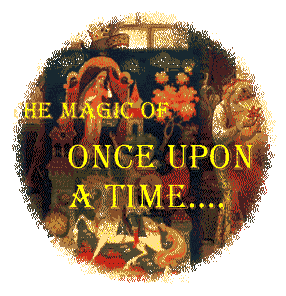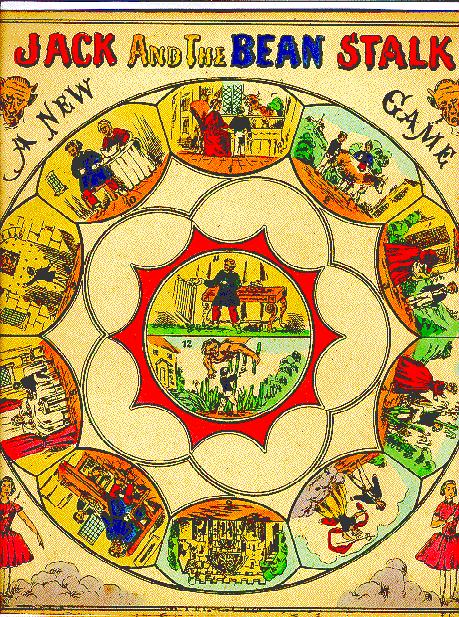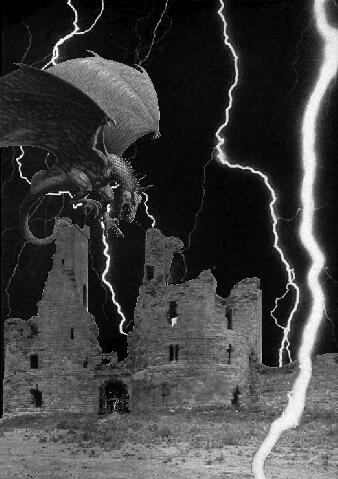|
Narrative Logo - Click for Main Menu X. The Psychology of Folk: The Horse at the Well?The Freudian Slip
Caption: Dr. Freud The main questions and problems of the course have included the following: How do we interpret the archived orality of the past? How do we contextualize and interpret the extinct genres of folklore? How does folklore reflect the mentality and the social reality of the tradition-bearers? How does folklore transform in time? How is folklore used in building up identities and national ideologies? Finally we come to probably the most popular theories of folk material - Freud was a leader in these - and we see Freudian/Jungian interpretations of everything from Snow White to Elephant Jokes. The psychological interpretation posits the patterns of folk tales as a part of our subconscious understanding of the drama of life as it is lived in the interior of each one of us. Undoubtedly, we will have talked about the interior nature, the almost supernatural affinity we have for tales, all the way along. This section will be of interest to all of you in writing your papers--it is clear from the accounts that we have heard that suppression, alteration, and omission have been hallmarks of the stories that were handed down in your families, for example. And, it is not that difficult, sometimes, to see the kinds of things that might have been omitted. The details are cleaned up by our families in the process of telling, just as Little Red Riding Hood gets progressively sweeter and nicer as it is re-visited through the centuries.
Caption: A little soldier attacks a tyrant Although Sigmund Freud did not analyze mythology nearly as
comprehensively as Jung, he helped to make the tragedy of Oedipus Rex (who unwittingly
killed his father and married his mother) a cornerstone of psychoanalytic theory. The
"Oedipal conflict" is based on Freud's belief that every young boy develops
sexual feelings toward his mother but fears that his father will find out and punish him
by cutting off his genitals. This conflict is normally
resolved when the boy identifies with his father. Freud called this the phallic stage of
development (from the Greek word for penis).
Caption: Early illustration for Jack and the
Beanstalk Game Board
Freud writes in Chapter Five of The Interpretation of Dreams: "Generally speaking, we are not in a position to
interpret another person's dream if he is unwilling to furnish us with the unconscious
thoughts which lie behind the dream-content, and for this reason the practical
applicability of our method of dream- interpretation is often seriously restricted. * But
there are dreams which exhibit a complete contrast to the individual's customary liberty
to endow his dream-world with a special individuality, thereby making it inaccessible to
an alien understanding: there are a number of dreams which almost every one has dreamed in
the same manner, and of which we are accustomed to assume that they have the same
significance in the case of every dreamer. A peculiar interest attaches to these typical
dreams, because, no matter who dreams them, they presumably all derive from the same
sources, so that they would seem to be particularly fitted to provide us with information
as to the sources of dreams. This leads us to an interesting dilemma. In the revision of folklore, are we looking at a conscious or unconscious process? In what way would the "teller" be able to disclose to us what kind of unconscious thoughts he might have had, if they are unconscious?
Caption: Dragon and lightening over ruined castle
"...it has become harder to avoid perceiving that Freud's conveniently unexaminable case material always fit perfectly with whatever notion he had most recently pressed into service from unacknowledged and often questionable sources." "Macmillan shows, and any diligent reader can now be satisfied, that each major complication in Freud's model was added not to account for observations of conflicted behavior but to paper over a failure of coherent linkage between his prior constructs and the reputed evidence for them." "When Freud declared that the unconscious draws no distinction between real and fantasized events, for example, he was not reporting a testable finding but concocting an excuse for the collapse of his seduction theory, sparing himself the embarrassment of admitting that he had secured no relation at all between supposedly repressed sexual material and the origin of psychoneuroses, and concealing the ominous tendency of his method of inquiry--the one that he kept right on using--to generate false results. 4 Likewise, as Macmillan shows, Freud was led into the conceptual maze of infantile sexuality not by any observation of children but by this same unwillingness to face the seduction debacle forthrightly. Rather than abandon his thwarted belief in the sexual meaning of symptoms, he chose to transplant the blame for precocious eroticism from the "seducer" to the child's own constitution. The result was a veritable funhouse of zones, modes, phases, and drives, proliferating with a wildly cavalier disregard for parsimony. Even "hereditary taint," the all-purpose diagnostic shibboleth that psychoanalysis had supposedly rendered obsolete, eventually found its way back into Freud's theory and acquired an unprecedented phylogenetic grandiosity as his here-and-now explanations, predictions, and therapeutic boasts continued to turn to dust. All in all, psychoanalytic theory became ever more Byzantine, and mental activity was alleged to be ever more "overdetermined," as a consequence of Freud's insistence on salvaging his far-fetched repression etiology by any means necessary. 5" "By now, of course, that pretension has been thoroughly refuted and, indeed, abandoned by most analysts. Yet their heightened diffidence about arriving at precise reconstructions of early trauma has failed to weaken their reliance on free association as a paramount investigative tool. As Macmillan reminds us, modern analysts fail to grasp that the privileged status of such evidence rested on a number of improbable conceptions: that the mind is a reflex apparatus for fending off stimulation; that memories are inextinguishable; that dreams and symptoms and associations transcribe remote memory traces; that symptoms are acquired from traumas in a fixed sequence of events; that symptoms reenact the sensory content of the original traumatic shock; and that motives or reasons can be treated as if they were physical causes. 7 Absent all that folklore, the probing of free associations dwindles to the amusing but expensive parlor game that, in fact, it always was." "Throughout his whole career of lawgiving, the linkage between evidence and theory was established by rhetorical guile and nothing more." Frederick Crews, University of California, Berkeley The basic tenants of Freud are somewhat complicated, having to do as much with psychiatric strategies as mappings of the psyche. Moreover, many of the Freudian concepts have, themselves, entered into the popular folklore in the guise of "Oedipus Complex," "Mother Complex," and so forth. Probably, the folk-preserved versions of his sophisticated theories are themselves sufficient for us to use for purpose of looking at folktales. Based on such narrative motifs as the "rite of passage," "sacred place," "decisive moment," and the "magic gift," we can explore the quest for Self that underlies some of the most representative European folk tales. The psychological interpretations - Freud, Jung, Von Frantz, and Ericson - primarily concern themselves with the "self" of the European Folk tales. Presumably we are unable to determine what the "self" might be in other cultures - but this concentration on European self is characteristic of a Euro-centered view of the world, as well. In his essay, "Freud, Faerie Tales, and Dream Interpretation: Towards a Practical Hermeneutics of the Instinctual Disruption of Texts," Marc Fonda [no longer available on the WWW] identifies one of the key problems of actually looking at the process of the unconscious influencing the telling and re-telling of tales. The issue here is to see how the subconscious or unconscious can be detected in the tale--and he suggests that one way is to look at tales for which we have several versions [ah, and we have been doing this with our examination of the Cinderella tales and with our study of the Grimm stories.] His key ideas in the text-making or folk-making process involve Freud's "pleasure principle" and the "reality principle." "In my opinion, redactive transformation is most likely to appear under the following conditions: in texts that are frequently translated and re-translated; in documents that are subject to numerous interpretations over time; and, in manuscripts that have been edited continuously over a period of time. The Grimms' fairy tales fall under the latter category; and, they are excellent yet succinct examples for this initial analysis into a practical hermeneutic of sacred texts." Fonda's explanation of the pleasure-unpleasure principle and how it relates to the reality principle. "Freud postulates that the pleasure-unpleasure principle functions as a continuum between the conscious and unconscious states of being.2 It is a notion3 that refers to the interplay of tension caused by unpleasurable ideas and by the processes that function to bring about the reduction of tension. The pleasure-unpleasure principle is said to apply itself to dreams as well as to every-day, waking activities. It does so in order to cause thoughts to become more acceptable to one's moral conscience. That is, this principle operates through the primary and secondary processes in attempts to repress or alter objectionable unconscious desires. By investigating the role of Freud's dream mechanisms utilised for the alteration of objectional, unconscious thoughts, it should be possible to speculate upon parallel activities in conscious textual activity." Fonda, and Freud, list several ways in which the original material is altered in memory to lessen the discomfort: condensation, displacement of effect, symbolization, and secondary revisioning. We could also include outright omission. "The mechanisms that I refer to are the means through which original, unpleasurable dream-thoughts are altered to make up the dream proper. These methods include: condensation, displacement of affect, 'symbolization,' and secondary revisioning. The symbolization process operates through a variety of methods as an indirect form of expression. Secondary revisioning, in contrast, has been characterized as behaving similarly to preconscious thought. It operates as an attempt to establish order, to set up relationships and, most importantly, to cause the material to conform to our intellectual or moral expectations. One could say that secondary revisioning functions to both revise and to re-vision psychical material at the preconscious level.4 I believe there is no reason to assume that such activities do not occur during the writing process." Here Fonda argues that the act of repression
can be both conscious and unconscious. That is, Perrault may have altered some
details consciously to please his court audience, and he may have omitted others quite
unconsciously (that is, if you pointed out to him that detail had disappeared, he might
not have noticed) "A question which arises, however, is whether symbolization and revisioning are a result of some unpleasurable feeling that emerged because of the ideas being manipulated. It seems logical, within the Freudian conceptual framework, to suppose that this motivation will be present not only in the dream-work but also in intentional activity. The phenomena of revising texts in the academic, religious, and artistic milieus may thus be considered to be a result of both moral and aesthetic considerations.5 That is to say, if some ideational content within a written text causes an unpleasurable reaction, it will be revised, altered, or even left out (repressed) altogether.6 " Fonda points out that the forgetting or repressing can occur on a wide scale, throughout a culture or population. "Such occasions of forgetting, or revisioning,
are not limited merely to the individual but may also appear on a mass scale. As Freud
points out: "where the origin of a people's traditions and legendary history are
concerned, a motive of this kind, whose aim is to wipe from memory whatever is distressing
to natural feeling, must be taken into consideration."9 The above passage suggests
that Freud anticipated if not shared my opinion that the pleasure-unpleasure principle can
operate in the mutability of a society's
historical documents. Although Freud did not go so far as to examine this notion fully, he
certainly did believe that these same unconscious processes and mechanisms were utilized
by the preconscious and conscious systems.10 It is in "The Acquisition and Control of
Fire" that Freud discusses distortions that may appear in the transition of fact to
myth. Such distortions, he writes, "are of the same sort as, and no worse than, those
which we acknowledge everyday, when we reconstruct from a patient's dreams the
repressed but extremely important experiences of their childhood".11 Hence, when a
document, historical or imagined, is translated into or considered to be a myth or story,
it is subject to the same kinds of distortions that are indicative of dreams. If the
content of the text is considered to be objectionable in nature, it may be altered in such
a way as to be less distressing to the author or Fonda goes on to point out that once the primary tension has been relieved by the secondary action of making a "reality" adjustment, the motives and discomfort of the primary reaction may be forgotten entirely. "For Freud, the part played by the secondary process is restricted to directing wishful impulses along the most expedient paths. Nonetheless, as Freud writes, "these unconscious wishes exercise a compelling force on all later mental trends, a force which those trends are obliged to fall in with or which they may perhaps endeavour to divert and direct to higher aims." To complete our deconstuction of the process, Fonda explains that there are two ways that the "reality" instinct can operate: fate of the impulse and relationship to the object. That is, we may alter a story to make it less likely that we, ourselves will violate external realities, or we may alter it to please or mollify the audience. "Consequently, there are two ways of distinguishing between these processes. First, in regards to the fate of an impulse and, second, in terms of the relationship to the object.32 From this view point, we may see the primary process as being "objectively autistic." The secondary process, in contradistinction, leads to communication, contact and interaction with an external object, "which, at the moment of consummation, is both objectively and subjectively present."33 Stated differently, the primary process is purely psychical, inner-directed and wishful in nature; while, the secondary process accounts for and works through external reality. Thus, in our case, the secondary process prompts the 'real' alteration of texts." Fonda goes on to discuss Charles Rycroft's critique of the Freudian explanation - Rycroft claims that is it difficult to distinguish conscious action in this case from unconscious - and I think we would tend to agree. Nonetheless, the process continues, unabated. Once we have seen how the process works, we
can examine what kinds of "self" might be protected or projected in familiar
tales. |




